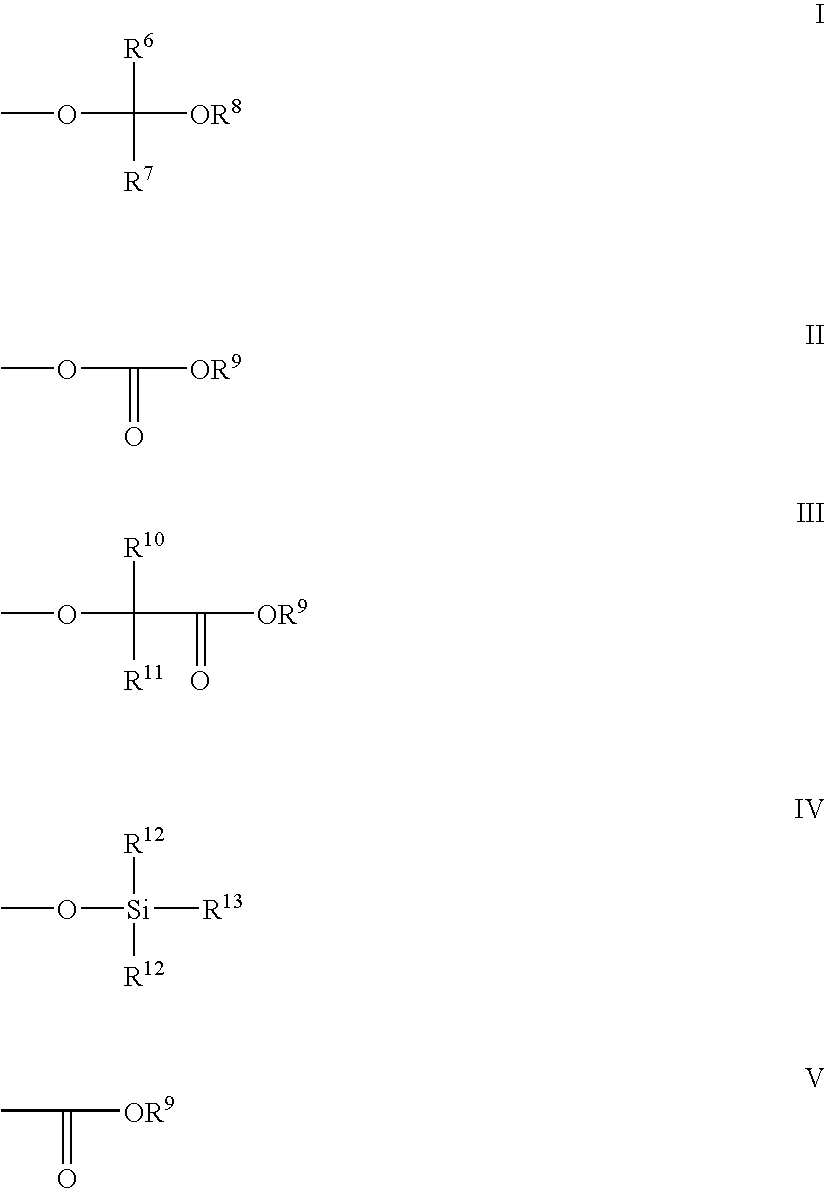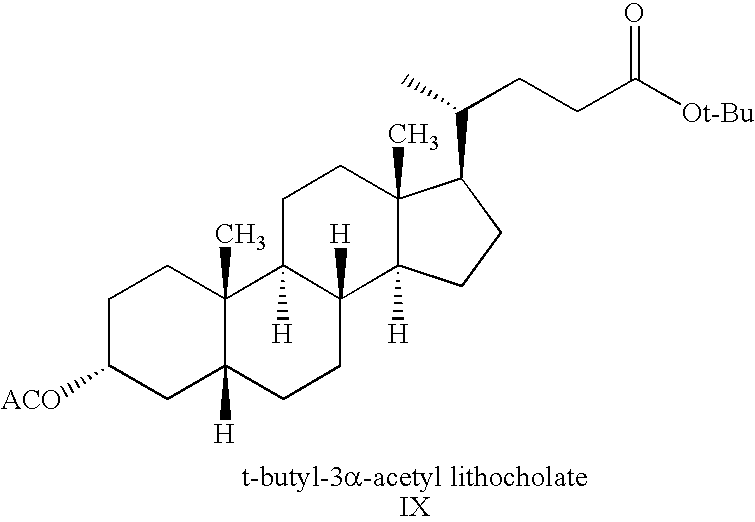Hydrofluoroalkanesulfonic acids from fluorovinyl ethers
a technology of fluorovinyl ether and hydrofluoroalkanesulfonic acid, which is applied in the field of strong acids, can solve the problems of corroding process equipment, relatively volatile trifluoromethanesulfonic acid, and corroding process equipmen
- Summary
- Abstract
- Description
- Claims
- Application Information
AI Technical Summary
Benefits of technology
Problems solved by technology
Method used
Image
Examples
example 1
Synthesis of Potassium 1,1,2-Trifluoro-2-(trifluoromethoxy)ethanesulfonate (TTES-K) and 1,1,2-Trifluoro-2-(trifluoromethoxy)ethanesulfonic acid
[0123] This example demonstrates the reaction of perfluoro(methyl vinyl ether) (PMVE) according to this invention. A 400 ml Hastelloy® C276 reaction vessel is charged with a solution of 11.4 g potassium bisulfite hydrate (KHSO3·H2O, 95%, Aldrich, 0.07 mol), 44.5 g potassium metabisulfite (K2S2O5, 99%, Mallinckrodt, 0.20 mol) and 200 ml of deionized water. The pH of this solution is 5.8. The vessel is cooled to −35° C., evacuated to −3 psig (80.6 kPa), and purged with nitrogen. The evacuate / purge cycle is repeated two more times. To the vessel is then added 60 g perfluoro(methyl vinyl ether) (PMVE, 0.36 mol). The vessel is heated to 125° C. at which time the internal pressure is 571 psig (4040 kPa). The reaction temperature is maintained at 125° C. for 4 hr. The pressure drops to 33 psig (330 kPa) at which point the vessel is vented and coole...
example 2
Synthesis of Potassium 1,1,2-Trifluoro-2-(trifluoromethoxy)ethanesulfonate (TTES-K)
[0126] A 1-gallon Hastelloy C276 reaction vessel is charged with a solution of 114 g potassium sulfite hydrate (KHSO3·H2O, 95%, Aldrich, 0.72 mol), 440 g potassium metabisulfite (K2S2O5, 99%, Mallinckrodt, 1.98 mol) and 2000 mL of deionized water. The pH of this solution is 5.8. The vessel is cooled to −35° C., evacuated to −3 psig (81 kPa), and purged with nitrogen. This evacuate / purge cycle is repeated two more times. 600 g perfluoro(methyl vinyl ether) (PMVE, 3.61 mol) is added to the vessel, which is heated to 125° C. at which time the internal pressure is 462 psig (3290 kPa). The reaction temperature is maintained at 125° C. for 6 hr. The pressure drops to 25 psig (275 kPa) at which point the vessel is vented and cooled to 25° C. Once cooled, a white crystalline precipitate of the forms, leaving clear colorless liquid above it (pH=7). 19F NMR of the white solid shows it to be the desired product...
example 3
Synthesis of Potassium 1,1,2-Trifluoro-2-(perfluoroethoxy)ethanesulfonate (TPES-K)
[0130] A 1 -gallon reaction vessel made of Hastelloy C276 is charged with a solution of 88 g potassium sulfite hydrate (KHSO3·H2O, 95%, Aldrich, 0.56 mol), 340 g potassium metabisulfite (K2S2O5, 99%, Mallinckrodt, 1.53 mol) and 2000 mL of deionized water. The vessel is cooled to 7° C., evacuated to −7 psig (48 kPa), and purged with nitrogen. The evacuate / purge cycle is repeated two more times. To the vessel is then added 600 g perfluoro(ethyl vinyl ether) (PEVE, 2.78 mol) and the vessel is heated to 125° C. at which time the inside pressure is 320 psig (2300 kPa). The reaction temperature is maintained at 125° C. for 10 hr. The pressure drops to 23 psig (260 kPa) at which point the vessel is vented and cooled to 20° C. The crude reaction product is a white crystalline precipitate with a colorless aqueous layer (pH=7) above it. 19F NMR of the white solid shows pure desired product. 19F NMR of the aqueo...
PUM
| Property | Measurement | Unit |
|---|---|---|
| Acidity | aaaaa | aaaaa |
| Acidity | aaaaa | aaaaa |
| Acidity | aaaaa | aaaaa |
Abstract
Description
Claims
Application Information
 Login to View More
Login to View More - R&D
- Intellectual Property
- Life Sciences
- Materials
- Tech Scout
- Unparalleled Data Quality
- Higher Quality Content
- 60% Fewer Hallucinations
Browse by: Latest US Patents, China's latest patents, Technical Efficacy Thesaurus, Application Domain, Technology Topic, Popular Technical Reports.
© 2025 PatSnap. All rights reserved.Legal|Privacy policy|Modern Slavery Act Transparency Statement|Sitemap|About US| Contact US: help@patsnap.com



